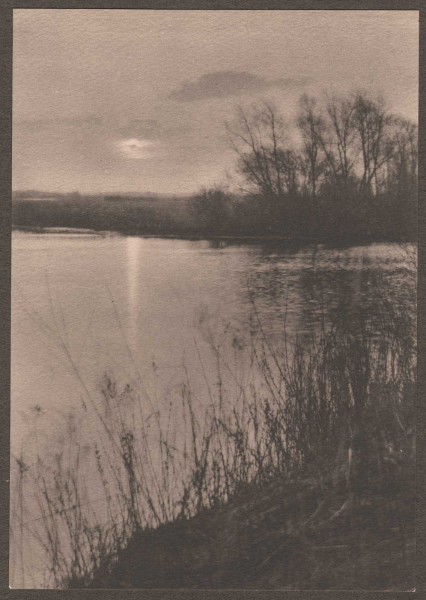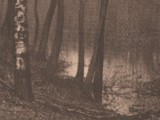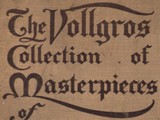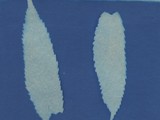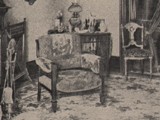Edge of the Pond
PhotographerJ.H. Field
CountryUnited States
MediumPhotogravure
PortfolioThe Vollgros Collection of Masterpieces of American Photographs
AtelierJ. Ellsworth Gross (Chicago), Photographic Printing Co.: P.F. Volland (Chicago)
Year1903
View Additional Information & Tags
Dimensions
Image Dimensions: 16.0 x 11.2 cm tipped along upper margin
Support Dimensions: 35.4 x 27.8 cm
J.H. Field was from Berlin, Wisconsin at the time this portfolio was published.
J.H. Field: 1869-1936
Julius Herman Field (also called “Fields”) was born 19 February 1869 in Waupun, Wisconsin. Son of a contractor and builder, he was trained in the Arts and Crafts tradition. Physical frailness forced him to seek another occupation, so he took up photography. Mostly self-taught, he won second prize with his first photo contest submission. As magazines began publishing his work, he saved enough money to pay for training from a photographer in Waupun. After a years’ apprenticeship, he was hired by his teacher and by 1894 had managed to buy a studio in Berlin, Wisconsin.
He hired as his assistant Minnie Bell Dies (born 16 March 1879). She was his bookkeeper, lab technician, retoucher, “official greeter” as Field became increasingly deaf, and eventually his wife as well. Their only child was a son, Burton, born in Berlin.
The Fields, influenced by William Lighton’s article about Happy Hollow Farm in The Saturday Evening Post (22 January 1910), moved to Fayetteville, Arkansas, in 1913. (Lighton later enlarged and published “Happy Hollow Farm” as a book, illustrated by Field’s photographs.) At first the family lived at 207 North College, while Burton attended the University of Arkansas, finishing in 1933. The Fields then bought a house at 735 West Dickson and took in student boarders. Field’s studio was on or just off of the square, on the second floor. Portraits were the “bread and butter” of Field’s business, and he did some traveling to photograph children and families in their own homes and gardens, though traveling made him ill.
The bicycle was Field’s main means of transportation. (It was only after his retirement that he owned a car, a Model A Ford, which neither he nor Mrs. Field could drive.) Field also was in the habit of taking long walks into the country, especially along railroad tracks, frequently with his camera. Many of his nature pictures were taken early in the morning. He often returned to the same place (he made thirty trips in one case) until the light was just right.
Following a series of heart attacks, Field died 14 January 1936. The body was returned to Waupun for burial. Despite failing eyesight, Mrs. Field stayed in Fayetteville, even continuing to print and sell Field’s photographs. She finally went to Richmond, Virginia, to live with Burton, by then a doctor. She died there 7 May 1971.
(Source: Special Collections Division, University of Arkansas Libraries, Fayetteville, Arkansas)
